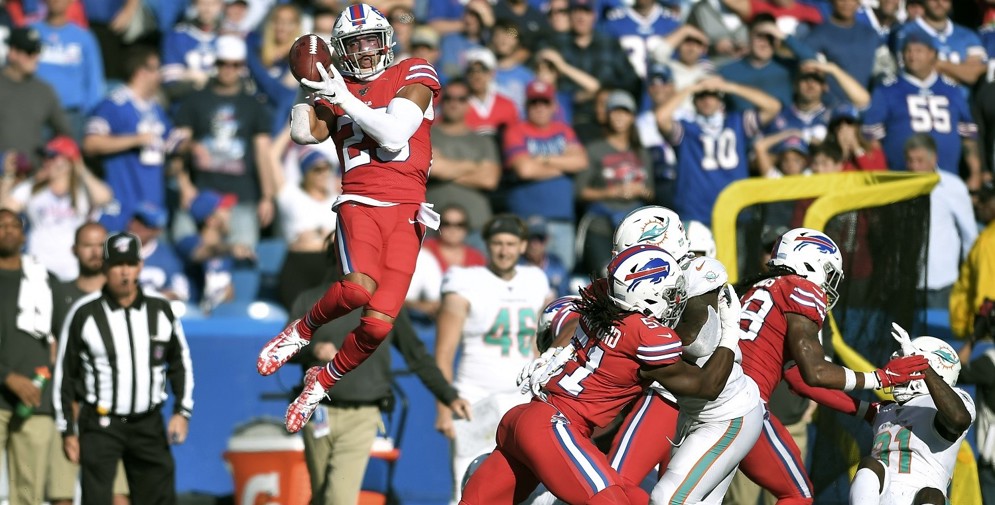The Extra Point Why Fourth-and-15 from the 25? Insight into the NFL’s experiment with an onside-kick alternative
January 24, 2020

In the 2020 Pro Bowl, a team scoring a touchdown or field goal will be able to attempt a fourth-and-15 offensive play from its own 25-yard line to try to keep possession of the football. If the offense converts, it keeps the ball; if it falls short, the defending team takes over at the dead ball spot.
Why this experiment? In today’s post, we’ll explain how the league used analytics to inform this potential onside kick alternative.
The Football Operations data and analytics team’s first research into an onside kick alternative began before the NFL’s offseason meetings in March of 2019, when the Denver Broncos proposed a rule change that would give scoring teams the option of using one fourth-and-15 play each game. Under Denver’s proposal, the scrimmage play would occur from a team’s own 35-yard line. Denver was motivated by the decline in onside kick recovery rates. Kicking teams historically recovered onside kicks between 15% and 20% of the time in a given season. In 2018, in part to changes on the kickoff play, that number dropped below 10%.
The league’s challenge: How to give teams an opportunity to maintain possession by using game play instead of the onside kick.
The first aspect of game play we looked at was how often teams convert on third and fourth down given various yards to gain. But plays aren’t simply “convert” or “not convert” — on several plays, penalties either give the offense the first down, or require the offense to start over from a different position.
Here’s a chart that shows the complete set of scrimmage play outcomes, using plays from 2002 through 2018. Only plays run with a score differential of eight points or fewer are included, and those run within the last two minutes of each half are dropped.

The light red band reflects the percentage of plays where the offense picks up a first down on the play, while the dark red corresponds to first downs picked up by penalties (defensive holding and defensive pass interference, for example, lead to automatic first downs). The dark blue areas correspond to what we termed as “do-overs,” in which the offense keeps possession but needs to attempt a play from a new line of scrimmage. Finally, the areas in light blue are defensive stops.
In reality, the closest match for an onside kick is to follow a team attempting a fourth-down play until either it has picked up a first down or a defensive stop is made, while also accounting for the do-overs. In other words, if 100 teams attempt a fourth-and-15 but pick up an offensive holding penalty, at least one of those teams is going to convert the ensuing fourth-and-25.
Accounting for do-overs, we settled on the following chart to compare Denver’s proposal of a fourth-and-15 with the historical onside kick recovery rate of 13.2%.

Denver’s proposal is slightly more forgiving than the onside kick (note: we used only expected onside kicks in this calculation), although the differences are within a few percentage points. A perfect comparison for the historical onside play would be a fourth-and-17 scrimmage play.
Lastly, we searched for the best yard line to use for the scrimmage play. Although Denver suggested the 35-yard line — the same as where teams kick off — teams that pick up first downs on scrimmage plays typically gain more yards than just the line to gain. Teams converting on fourth-and-14 to fourth-and-16 typically end up eight yards past the line to gain when they convert. Our suggestion then — and the yard line that we’re testing at Pro Bowl — will push offensive teams back 10 yards to their own 25-yard line.